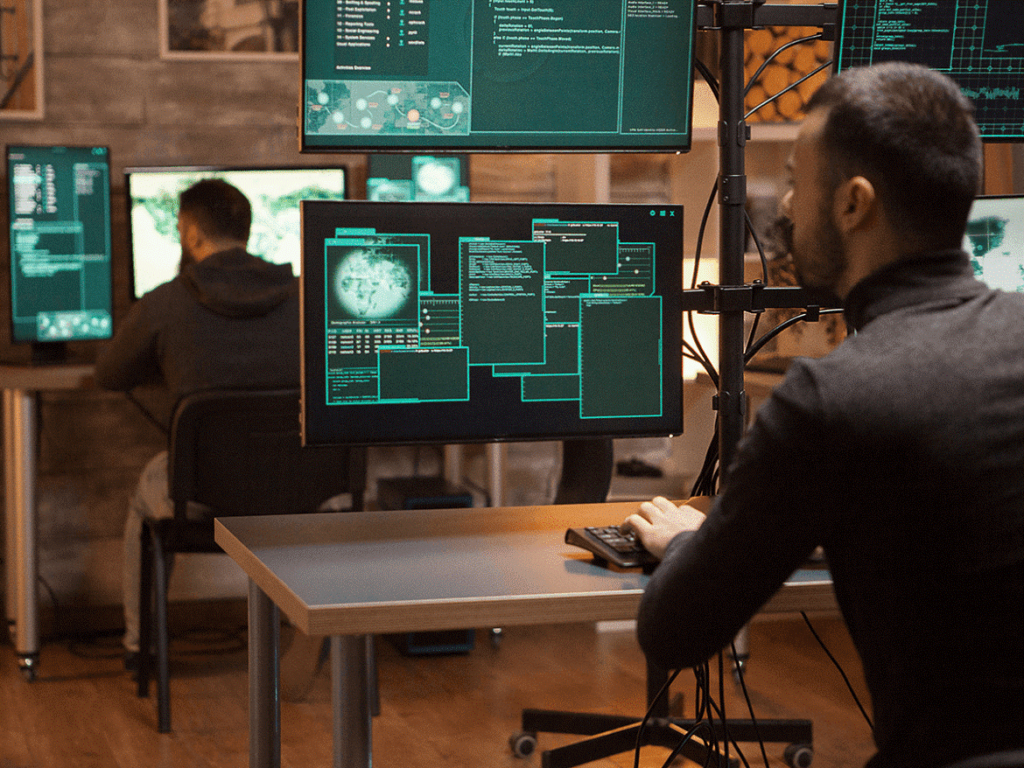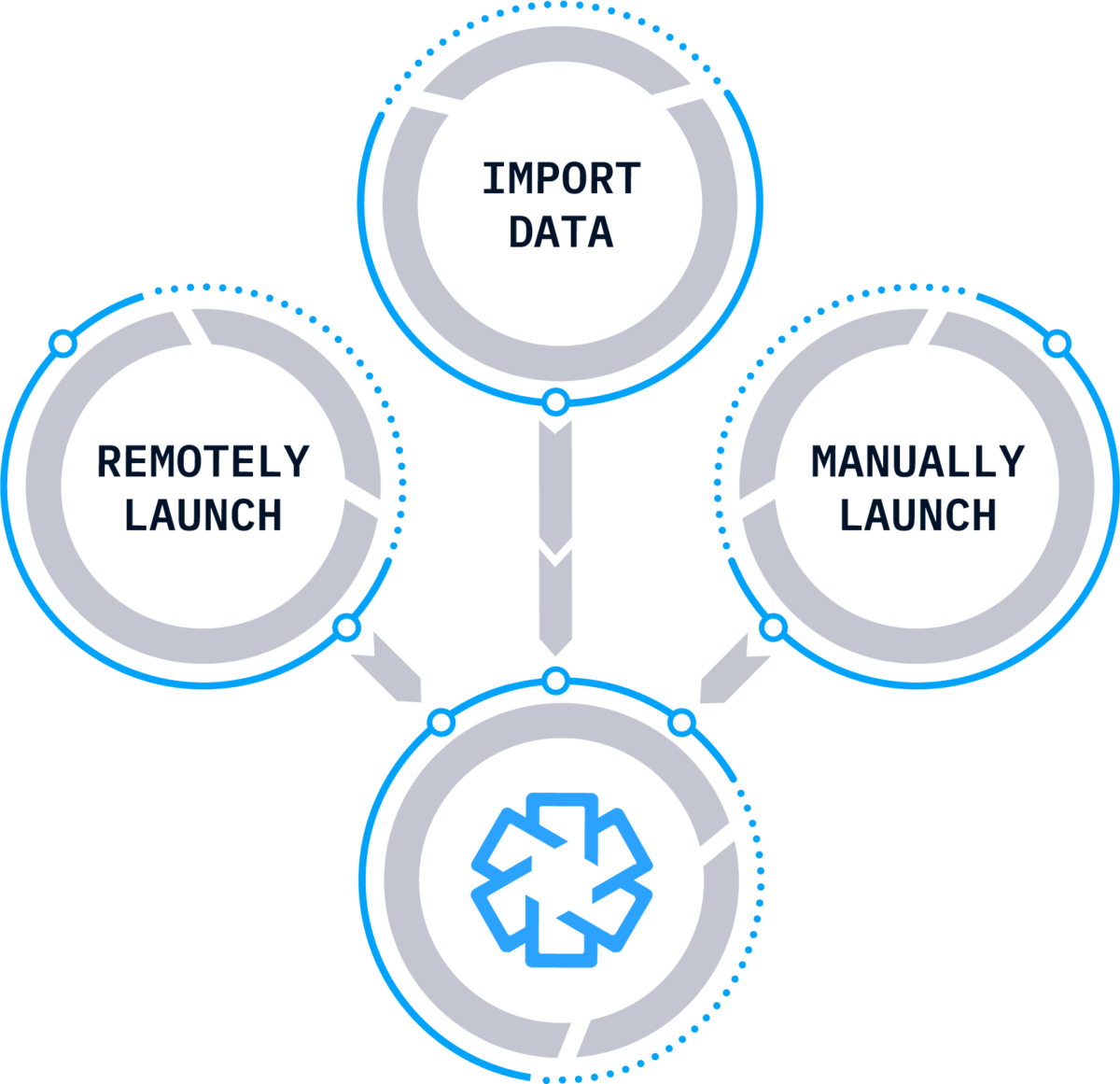- Vision
To relentlessly pursue technological innovation and excellence for the seamless security services and benefit of our clients. To become the preferred and trusted partner to manage the security services and business environment as we envision “Your security is our concern”.
- Mission
To become trusted partner of our business by delivering timely services with a focus on sustainable best practice while keeping at par with international standards of operation, technology, security personnel, tools & equipment.
Our commitment is keeping you safe
The global cost of cybercrime is expected to reach $10.5 trillion annually by 2025. As businesses become more reliant on digital systems, the risk of cyberattacks continues to grow at an alarming rate. Every day, organizations around the world face threats like malware infections, ransomware attacks, data breaches, and denial-of-service (DoS) incidents. The damage from these incidents goes beyond immediate financial loss, also affecting business continuity, regulatory compliance, and customer trust.Cyber security has become increasingly vital in today’s digital age, as organisations and individuals face growing cyber threats and attacks.

With businesses and individuals relying heavily on technology, cybercrimes are growing fast. Proving these crimes, however, is not easy. Critical evidence for cybercrimes often resides within electronics such as computers and mobile devices. It is important to collect digital evidence to help fight cybercrimes and bring justice. This is where cyber forensics comes in. Cyber forensics is a critical cybersecurity field that involves the identification, preservation, analysis, and presentation of digital evidence. Forensics in cyber security has emerged as a crucial component in protecting sensitive data and investigating cybercrimes.
Cybersecurity forensics is very crucial in today’s environment. With cybercriminals constantly evolving their tactics, having the capability to investigate incidents and uncover crucial evidence is vital for several reasons:
Without cybersecurity forensics, many cyberattacks would go unnoticed or remain misunderstood. Forensics in cybersecurity helps to uncover how an attack occurred, such as the tactics, techniques, and procedures (TTPs) used by attackers. Thus, this knowledge is essential for closing security gaps.
Many industries are subject to regulations that require organizations to follow specific protocols when data breaches occur. Cybersecurity forensics helps ensure compliance with these legal frameworks.
The evidence gathered during a forensic investigation can lead to the identification and prosecution of the perpetrators.
Cybersecurity forensics helps organizations assess the extent of the breach, control the damage, and take appropriate action to protect sensitive information.
The findings from forensic investigations provide invaluable insights into vulnerabilities and can help refine security protocols.
By understanding how a breach occurred, organizations can take steps to prevent similar incidents in the future. For example, if a phishing attack was the entry point for a malware infection, forensics can reveal how the email bypassed security filters. Therefore, this allows IT teams to improve their email protection systems.
In the event of legal action—such as prosecuting a cybercriminal or pursuing insurance claims—cybersecurity forensics provides the necessary evidence. This includes logs, malware samples, network traffic captures, and system images, all of which you can use to trace the source of the attack and identify the perpetrators.
Types of Cybersecurity Threats:
Cyberattacks come in various forms, and cybersecurity forensics must be adaptable to handle each type. Here are some common cybersecurity threats:
- Malware is malicious software designed to disrupt, damage, or gain unauthorized access to computer systems.
- Ransomware is a type of malware that encrypts data, with attackers demanding payment for the decryption key.
- Phishing involves social engineering attacks that trick individuals into revealing sensitive information, such as passwords or financial details.
- DDoS attacks overwhelm a server or network with traffic, making it unavailable to legitimate users.
- Insider threats are malicious or negligent actions by individuals within the organization that can lead to data breaches or system compromise.
Types of Cybersecurity Forensic Investigations:
Biometrics, Cyber forensics, Computer Forensics, End point security, Mobile & web security, Critical infrastructure security, Network security, Cloud Forensics
Phases in a cyber forensics procedure: Cyber forensics typically follows predefined procedures for extracting information and generating a structured evidence report:
- Identification & Incident response. Determining which evidence is required for the purpose.
- Evidence collection & Preservation. Deciding how to maintain the integrity and security of extracted evidence.
- Data preservation, Analysis & Examination. Understanding the insights the information does (and does not) provide.
- Documentation. Creating and recovering data to describe the sequence of actions.
- Reporting & Presentation. Offering a structured overview of the extracted insights that lead to a conclusion.


Challenges with cyber forensics
Cyber forensics experts extract data from a variety of sources — any technologies that may be used by an end-user. These include mobile devices, cloud computing services, IT networks, and software applications. Distinct vendors develop and operate these technologies. The technology limitations and privacy measures tend to restrict the investigative capacity of an individual InfoSec expert as they face the following challenges:
- Data recovery. If the data is encrypted, the investigator will not be able to decrypt the information without access to encryption keys. New storage tools such as SSD devices may not offer immediate factory access to recover lost data, unlike traditional magnetic tape and hard disk drive systems.
- Visibility into cloud system. Investigators may only have access to metadata but not the information content of the files. The underlying resources may be shared and allocated dynamically. That lack of access to physical storage systems means that third-party investigators might not recover lost data.
- Network log big data. Network log data grows exponentially and requires advanced analytics and AI tools to connect the dots and find insightful relationships between networking activities.
- Multi-jurisdiction data storage. If the data is stored in a different geographic location, cyber forensics investigators may not have the legal authority to access the required information.
- Encryption and Data Hiding: Encryption transforms your data and locks it out by requiring a decryption key. But cyber adversaries can take it a step further by changing file extensions, hiding file attributes, and inserting bit-shifting into the mix. They may fragment the evidence or hide entire file partitions to make cracking down cases difficult.
- Anti-Forensics Techniques: Attackers are getting smarter and use advanced anti-forensics techniques to erase their digital footprints. These techniques include wiping off log files, deleting malware traces, using encryption to hide data, and employing rootkits to evade detection. Anti-forensics tools are designed to destroy or alter data in ways that can prevent investigators from gathering meaningful evidence. They add more layers of complexities to cybersecurity forensics processes.
- Volatile Data Analysis: Many forms of critical evidence exist only in volatile memory, such as RAM, which is lost when a system is powered off. This creates a significant challenge for forensic experts, who must capture this volatile data before it disappears. Without proper incident response procedures in place, valuable data such as running processes, active network connections, and session information can be lost, hindering the investigation.



Tools and Techniques
Cybersecurity forensics involves a variety of tools and techniques, each designed to help investigators gather, analyze, and interpret digital evidence.
Digital Forensic Tools
A widely used tool for analyzing hard drives, EnCase helps forensic experts recover deleted files, investigate malware, and create court-admissible reports.
Known for its speed and efficiency, FTK is used to scan and index large volumes of data, allowing investigators to quickly search for relevant evidence.
Wireshark is a network protocol analyzer that allows forensic teams to capture and analyze network traffic in real time, making it possible to detect unusual behavior or data exfiltration.
Known for its advanced cybersecurity solutions, SentinelOne provides advanced endpoint protection with integrated forensic capabilities, making it a valuable tool for incident detection and investigation. SentinelOne’s forensics capabilities allow security teams to perform deep investigations without relying on third-party tools.
Best Practices for Cybersecurity Forensics
To enhance the effectiveness of cybersecurity forensics and address the challenges involved, organizations should adopt several best practices. These best practices ensure that forensic investigations are thorough, legally compliant, and useful in both preventing and responding to cyberattacks.
Incident Readiness: One of the most critical components of effective cybersecurity forensics is incident readiness. Organizations need to be prepared in advance for cyber incidents by implementing robust policies and procedures and ensuring that staff are trained in incident response and forensic techniques.
Organizations should establish detailed incident response and forensic investigation policies that outline the steps to take following a cyberattack. These procedures should include proper data collection methods, preservation techniques, and guidelines for handling digital evidence. Regular audits and drills can help ensure that all employees understand their roles during a security incident.
IT and security teams must be well-versed in forensic tools, data-handling procedures, and legal requirements. Investing in regular training ensures that employees remain up to date with the latest threats and investigative techniques. Training sessions and incident response drills can simulate real-world scenarios, helping the team build readiness and confidence in handling cyber incidents.
Collaborative Efforts: In today’s interconnected world, collaboration is key to effective cybersecurity forensics. Public-private partnerships and international cooperation can help organizations strengthen their defenses and improve their ability to investigate cyberattacks.
Governments, law enforcement agencies, and private organizations must work together to share intelligence, best practices, and forensic tools. Thus, by collaborating with public entities like the FBI or CERTs (Computer Emergency Response Teams), private organizations can gain access to threat intelligence, incident response resources, and legal expertise. Therefore, this collaboration can enhance their ability to respond to sophisticated cyberattacks.
What will you do if a criminal attacks your organization from overseas? It may lie outside the jurisdiction of your state. This is where international cyber investigations come into play. In many such cases, international law enforcement agencies tie up with cybersecurity groups and coordinate efforts to solve incidents. Their joint investigations expedite the process of obtaining evidence, tracking down cybercriminals, and prosecuting offenders.


The impact of advancements in technology on cyber forensics
Advancements in technology, such as encryption, anonymisation, and remote storage, present both opportunities and challenges for cyber forensics.
While they enhance privacy and security for individuals and organisations, they also make collecting and analysing digital evidence more challenging.
Cyber forensic professionals must stay abreast of these advancements to ensure the effectiveness of their investigations.
As technology continues to evolve, so must the practices and techniques of cyber forensics.
By staying at the forefront of emerging trends and advancements, cyber forensic professionals can ensure the integrity and effectiveness of their investigations, ultimately safeguarding the digital landscape for all.


Why Choose Eagle Hunter Group?
At Eagle Hunter Group, we are more than just service providers—we are your trusted partners in security, workforce management, and operational efficiency. Here’s why clients across industries choose us:
- Presence, Expertise and Experience.
- Strong Management Team.
- Quality , process and systems.
- Integrated Security and Facility Management.
- Business Continuity Infrastructure.
- Time and Cost Efficiency.
- Wide range of training , facility and guaranteed placement.
- Coverage of wide industry and job roles.
- Association – 1000+ RA License & Affiliated with multiple agencies.
- One stop shop for all your needs.
- 4+ Decades of existence and experience.
- Value for money – In your budget and exceeding expectations with great value proposition.
- Delivery – On time and in full (OTIF).
- Infrastructure – State of the art Infrastructure and latest technology.
- Health – Good brand image along with strong financial conditions (zero debt).
- Customized solution for your organization.
Success Story





























